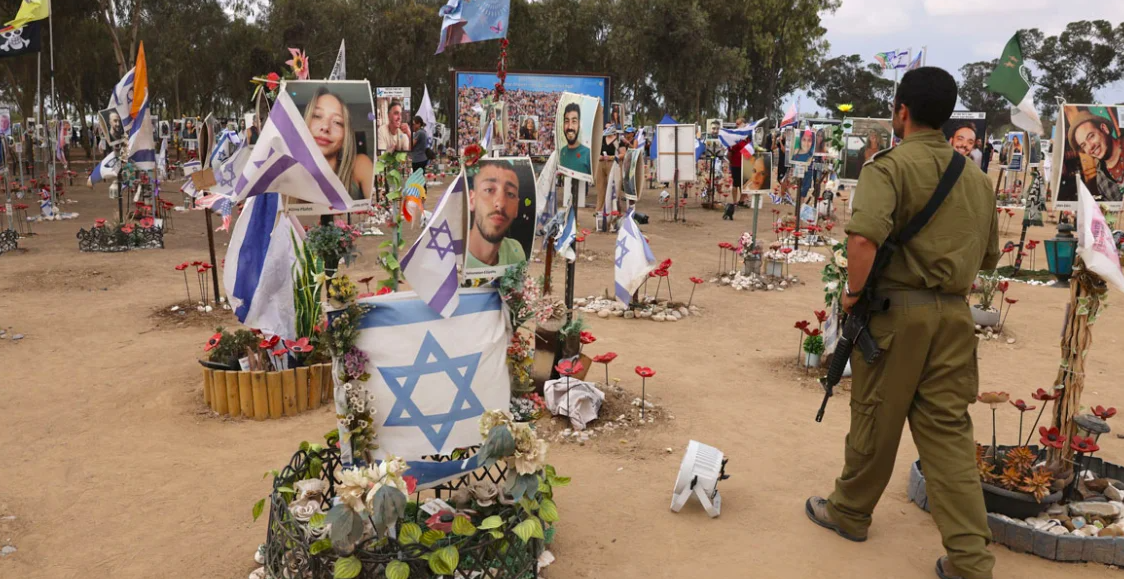When at dawn on October 7, exactly one year ago, the Qassam Brigades and Palestinian civilians by the thousands invaded the territories of Israel no one could have realized what was taking place.
One of the most powerful countries in the world, one of the countries with the most capable intelligence agencies and the country with the most sophisticated surveillance systems on the planet – along with the US had found itself at the mercy of the terrorist intentions of Hamas. The price for Israel has been heavy: more than 1000 civilians killed, almost 300 taken hostage inside Gaza at the hands of Hamas, and terror everywhere.
Within a year Israel declared war on all those who were in front of or behind its plan of destruction. From October 8, 2023 to the present day, its forces have literally flattened the Gaza Strip.
The Israeli army’s ground presence in the Strip is universal and Ismail Hanilla, the man behind every Hamas plan for years, has been dead for months. The cost to Palestinian civilians is enormous. More than 20,000 women and children have lost their lives out of a total of 41,000 killed by Israeli operations. But the front with Hamas is not closed for Tel Aviv as even today after Israel’s sweeping sweep through the enclave rockets continue to fall on southern parts of Israel.
When Israel’s defence minister announced a month ago that the Gaza front was in full control of the army, political and military analysts were quick to talk about the next day in the region. For Israel, however, Gaza was just the beginning. Since mid-September Tel Aviv has made it clear that it will “clean up” as soon as possible, including with Hezbollah in the north. The Shiite group from the first hours of the Israeli response in Gaza began firing hundreds of rockets into the Israeli north openly declaring its complicity with Hamas. Within 20 days Israel has both, on the one hand, stripped the pro-Iranian organization of its entire leadership – not only is Nasrallah dead, but also his successor – and on the other hand, with special army units, is sweeping southern Lebanon again since 2006. The second front is open and currently employs thousands of reservists and the bulk of Israeli fighters.
In the midst of all this belligerence from the north to the south, Israel has been hit for the second time by a missile attack from Iran. The first attack on April 13 was also the first time in history between the two countries that one of them decided to strike directly rather than with “intermediaries”. The second one last Tuesday was for Israel and the reason to open a third – parallel front, perhaps the most substantial one for Tel Aviv.
Benjamin Netanyahu has signaled that the response Iran will receive will be “tough” and today he has all the options in his own hands: nuclear, oil, military infrastructure. This front, the third parallel for Tel Aviv, is not a front that can “wait” and it should be taken for granted that Israel will move fast…
Israel also has an open front with the Houthis from Yemen. Missiles and drones from west of Yemen have hit targets as far away as Tel Aviv a while ago and have turned the transit through Aden into hell for all western ships. Israel’s allies Israel, the US and Britain have also openly engaged with the Houthis and have hit targets in the major port in the south of the Arabian Peninsula from the air several times in a year. For Tel Aviv, the Houthis are not a negligible quantity and it is a given that they will attempt to follow Lebanon and Iran in eliminating this threat as well.
The Prime Minister of Israel, Netanyahu himself and not his country, in addition to the military has an open front of his own this one with society. Netanyahu has not been able to bring back the hostages of October 7 and the protests in Tel Aviv have been through the year weekly and massive. The escalation of the front in the north and the goal of eliminating Hezbollah has temporarily “frozen” the internal attacks. But the problem is there and depending on developments it will make its appearance again.
Ask me anything
Explore related questions





